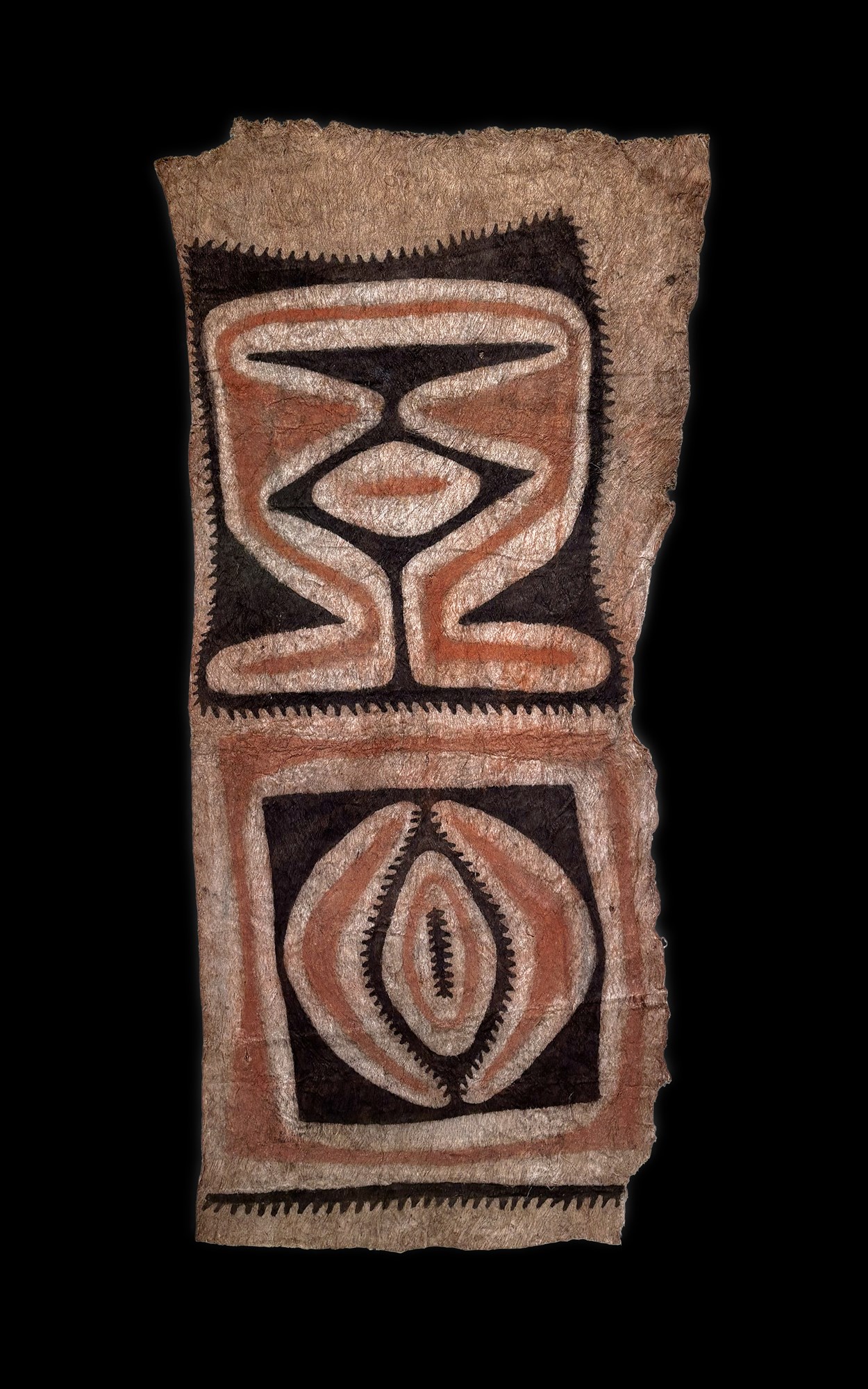Tapa Dance Apron
Period Late 19th to early 20th century.
Origin Melanesia
Medium Rare and fine tapa cloth
Dimension 86 x 43 cm (33⁷/₈ x 16⁷/₈ inches)
Period: Late 19th to early 20th century.
Origin: Melanesia
Medium: Rare and fine tapa cloth
Dimension: 86 x 43 cm (33⁷/₈ x 16⁷/₈ inches)
Provenance: Collected in PNG circa 1956/57 by Dadi Wirz (son of Paul Wirz), Basel ; Maureen Zarember, NY ; Clive Loveless, London; Kerner Collection, Barcelona ; Ex coll. : Oscar van Werdenburg, Holland.
Literature: See two other examples from the Wirz collection in Meyer 1998 fig. 9 and 10 (miss-catalogued as New Britain).
Ref. :
Meyer, Anthony JP.: TAPA – Bark cloth of Oceania. Catalogue d'exposition. Galerie Meyer, Paris. 1998. Text by Pascal Cusenier.
Schmitz, Carl A.: ZUR ETHNOGRAPHIE DES JUPNA-TALES IM NORDOSTEN VON
NEUGUINEA in ACTA ETHNOGRAPICA. Academiae Scientiarum Hungaricae. Tomus VII, Fasiculi 3-‐4, Budapest 1958.
Peter Mesenhöller und Oliver Lueb (Eds.) Made in Oceania: Tapa – Kunst und Lebenswelten | Art and Social Landscapes. RAUTENSTRAUCH-JOEST-MUSEUM, Köln, 2014
More artworks from the Gallery









